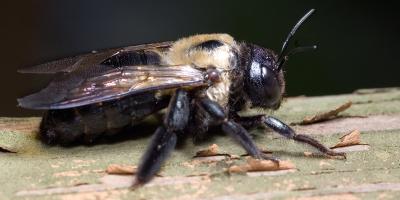The Science Behind a Wasp Sting

While some of us are lucky enough to have avoided ever being the target of an ornery hornet or wasp, the majority of us have not. Especially for outdoor enthusiasts and those who have jobs requiring time spent outdoors, you have probably been stung at least once
A sting can result from a one-off attack from a single, agitated wasp or hornet. Other times, hornet and wasp attacks result in someone being on the receiving end of multiple stings. Whether you blundered over an underground nest, or accidentally dislodged a hive while doing yard work, these instances most always cause an angry wave hornets or wasps to go on the defensive. The experience can be traumatizing, especially for children. And for those nursing their wounds (stings), the question remains: What exactly happens when someone gets stung and why is it so painful?
Simply put, you have the wasp’s specialized venom to thank for that intensely painful burning sensation. Wasp venom is a multi-tasker’s dream; against smaller animals and insects, it allows a wasp to paralyze prey and drag them back to their nest. Against larger targets, like us humans, the pain isn’t necessarily enough to paralyze us but is enough to cause us to flee and develop a healthy fear of these winged pests. Interestingly, the pain you feel from a wasp’s sting isn’t indicative of the physical damage a sting can cause. While it feels like your arm might be on fire, this is simply the venom damaging your nervous system’s cells, in turn causing tremendous pain.
All venom, wasps’ included, are formulations of specific enzymes and proteins that effectively dissolve healthy tissue and cells upon contact. On a microscopic level, venoms lay siege to healthy cells. They break down the cell wall that divides the innards of the cell, composed of its key organelles and cytoplasm. When the cell wall is dissolved, its contents spill out into the bloodstream and are treated as waste products by your body. When the cell that is being dissolved belongs to the nervous system, the remaining chain of nerve cells fire impulses to the brain that signifies total loss and mortal danger; hence the hot, shooting pain that sting victims often describe.
Other venoms cause even more damage, including internal bleeding and hemorrhaging, as noted in this Popular Science article:
“The venom can function as a specialized cell toxin that very specifically targets the prey's red blood cells and destroys blood vessels. The animal then dies of internal and external bleeding. Or the blood toxin can speed up coagulation so that blood clots throughout the prey's body. This way is especially fast-acting.”
Luckily, a wasp’s sting is nowhere near as deadly as a poisonous snake’s.
Still, the ideal way to deal with a wasp’s sting is to avoid them in the first place. Especially for home or business owners who have children or animals regularly frequenting their property, a wasp or hornet nest can be downright dangerous and should be eliminated quickly and effectively. The professionals at JP Pest Services have decades of experience removing these and other troublesome, stinging pests. Contact us today for a free estimate and find out why we’re the most trusted pest control provider in New England.



